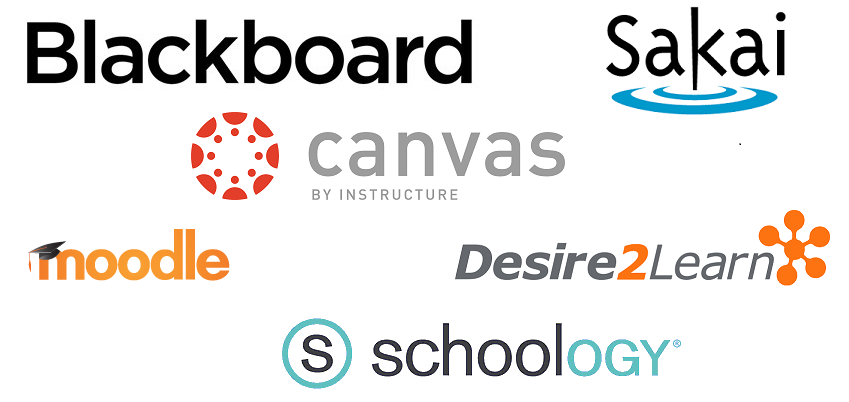Governmental and Not-for-Profit Accounting and Auditing, 2017-2018 Update
An Active-Learning Workbook
by Convery
ISBN: 9781618532503 | Copyright 2018
Tabs2017-2018 Edition
OVERVIEW
This workbook and related instructional resources in myBusinessCourse are designed to develop accounting and auditing knowledge of state and local governmental entities and not-for-profit entities sufficient to pass related parts of the CPA exam. Further, use of active-learning assignments that take students to real-world financial statements, standards-setters’ websites, Accounting Standards Codification, academic research, and IRS Form 990s develop critical thinking skills needed by auditors, consultants, financial managers, board members, taxpayers, and philanthropists. Author-prepared eLectures, Guided Examples, question bank, and activities provide instructors with a platform on which to customize a 1 credit or 3 credit; flipped or lecture; hybrid/online or in-person; undergraduate or graduate course for students in accounting, public administration, and nonprofit management programs.
AUTHOR VIDEO
Preview the workbook features in the below video, where author Sue Convery showcases the online learning activities:
Introducing myBusinessCourse
myBusinessCourse is a complete, secure, web-based training and e-Learning solution. There is nothing to download or install; it is accessible through any modern web browser and most mobile devices.

eLecture Videos
- Created by the authors of the textbook
- Consistent with the textbook's explanations and approach
- Cover learning objectives and concepts from each chapter
- Ideal for remediation
- Ideal for online and hybrid classrooms

Guided Example Videos
- Created by the authors of the textbook
- Provide problem solving strategies as well as solutions
- Offer clear, step-by-step demonstrations of how to solve select problems from the textbook

Auto-graded Assignments
- Provides immediate feedback
- Create assignments using problems from the textbook
- Additional randomized versions of assignments provide extra practice
- Ideal for remediation
- Include select questions from test banks

Respondus LockDown Browser®
- Assessments are displayed full-screen and cannot be minimized
- Browser menu and toolbar options are removed, except for Back, Forward, Refresh and Stop
- Prevents access to other applications including messaging, screen-sharing, virtual machines, and remote desktops
- Printing and screen capture functions are disabled
- Copying and pasting anything to or from an assessment are prevented
- Right-click menu options, function keys, keyboard shortcuts and task switching are disabled
- An assessment cannot be exited until the student submits it for grading
- Assessments set up with LockDown Browser cannot be accessed with other browsers
- Students use their preferred device to take exams (iPad, Mac, Windows)
- Students will be prompted to install LockDown Browser prior to accessing the exam

Detailed Reporting Tools
- Quickly review the performance of individual students
- Quickly review the performance of entire class
- Use reports on student performance to customize your lectures to fit student needs
Enhanced eBook
- Save money
- Includes myBusinessCourse
- Integrates eLecture and demonstration videos
- Bookmarking
- Note taking
- Highlighting

Third Party Integrations
- Single sign-on
- Link to assignments in myBusinessCourse from your third party course
- Automatically sync gradebooks each night
Flashcards
- Study, learn and master key terms.
- With linear-mode, get full control over the deck. Go back and forth between cards, shuffle and auto-play the deck.
- With certainty-mode, test how well you know each term. If you are not certain you have learned the term, it will display again later in the deck.

Support and Training
- Technical support for students and faculty available daily
- Faculty training conducted daily
· New to this Edition:
Module 3 has been significantly updated to reflect FASB’s new guidance for not-for-profit financial reporting.
Features
· Content is efficiently organized into seven modules; each with four specific learning objectives. The modules start (1) and end (7) with issues common to not-for-profit and governmental entities. Not-for-profit organizations that follow FASB guidance (3-4) are presented before state and local governments that follow GASB guidance (4-5-6).
· An expanded outline format provides an easy way for students to refer to learning objectives and take notes right in the workbook.
· Active-learning activities are provided for each learning objective. These activities require students to visit websites for authoritative literature, real-world financial and tax reports, and Excel-based journal entry and financial statement assignments. These activities can be assigned as group work or as homework for individual students.
· myBusinessCourse: is a complete learning and assessment program that accompanies the workbook and contributes to student success in this course. A large question bank provides multiple choice questions keyed to modules and learning objectives for in-class group work or individual quizzes and exams.
· eLectures are available for each learning objective, and Guided Example videos are available showing students how to do some of the complex problems.
· The author has provided sample syllabi for both 1-credit and 3-credit courses, which will be available under Instructor Resources.
| Expand/Collapse All | |
|---|---|
| About The Author (pg. iii) | |
| Preface (pg. iv) | |
| Table of Contents (pg. x) | |
| List Of Tables (pg. x) | |
| List Of Figures (pg. x) | |
| Module One: Introduction to the Government and Not-for-Profit Environment (pg. 1) | |
| Overview (pg. 1) | |
| Learning Objectives (pg. 1) | |
| Learning Context (pg. 1) | |
| 1.1 GNP Topics on the CPA Exam. (pg. 2) | |
| 1.2 Three Sectors of the US Economy. (pg. 2) | |
| 1.3 Accounting Standards-Setting. (pg. 4) | |
| 1.4 Objectives of Financial Reporting for Each Standards-Setting Entity. (pg. 6) | |
| Module 1 Resources (pg. 7) | |
| Activity (pg. 7) | |
| Discussion Questions (pg. 7) | |
| Stay Current (pg. 8) | |
| Critical Thinking Activities (pg. 8) | |
| Readings and Links (pg. 8) | |
| Module 1 Notes (pg. 9) | |
| Module Two: Not-for-Profit Organizations- Tax-Exempt Issues (pg. 11) | |
| Overview (pg. 11) | |
| Learning Objectives (pg. 11) | |
| Learning Context (pg. 11) | |
| 2.1 Life Cycle of a Tax-Exempt Not-for-Profit Organization (NFP): (pg. 12) | |
| 2.2 Public Charities vs. Private Foundations. (pg. 14) | |
| 2.3 IRS Form 990 Annual Information Return. (pg. 15) | |
| 2.4 Unrelated Business Income Tax (UBIT). (pg. 16) | |
| Learning Context Follow-up: (pg. 17) | |
| Module 2 Resources (pg. 17) | |
| Activity (pg. 17) | |
| Discussion Questions (pg. 17) | |
| Stay Current (pg. 75) | |
| Critical Thinking Activities (pg. 17) | |
| Readings and Links (pg. 17) | |
| Module 2 Notes (pg. 18) | |
| Module Three: Not-for-Profit Financial Reporting (pg. 19) | |
| Overview (pg. 19) | |
| Learning Objectives (pg. 19) | |
| Learning Context (pg. 19) | |
| 3.1 FASB’s Conceptual Framework for NFP Financial Reporting. (pg. 20) | |
| 3.2 Required Financial Statements for an NFP. (pg. 20) | |
| 3.3 Transactions and Accounts Unique to NFPs. (pg. 24) | |
| 3.4 Specialized Industries. (pg. 27) | |
| Learning Context Follow-up: (pg. 28) | |
| Module 3 Resources (pg. 28) | |
| Activity (pg. 28) | |
| Discussion Questions (pg. 28) | |
| Stay Current (pg. 28) | |
| Critical Thinking Activities (pg. 28) | |
| Readings and Links (pg. 28) | |
| Module 3 Notes (pg. 29) | |
| Module Four: State and Local Government (SLG) Financial Reporting (pg. 31) | |
| Overview (pg. 31) | |
| Learning Objectives (pg. 31) | |
| Learning Context (pg. 31) | |
| 4.1 Activities of State and Local Governments. (pg. 32) | |
| 4.2 Evolution of the Government Financial Reporting Model. (pg. 32) | |
| 4.3 Reporting Entity and Component Units. (pg. 37) | |
| 4.4 Measurement Focus and Basis af Accounting. (pg. 38) | |
| Learning Context Follow-up: (pg. 39) | |
| Module 4 Resources (pg. 39) | |
| Activity (pg. 39) | |
| Discussion Questions (pg. 39) | |
| Stay Current (pg. 39) | |
| Critical Thinking Activities (pg. 39) | |
| Readings and Links (pg. 40) | |
| Module 4 Notes (pg. 41) | |
| Module Five: Fund Accounting and General Fund Budgeting (pg. 43) | |
| Overview (pg. 43) | |
| Learning Objectives (pg. 43) | |
| Learning Context (pg. 43) | |
| 5.1 Purposes and Components of Fund Accounting. (pg. 44) | |
| 5.2 Governmental Budgeting Process. (pg. 46) | |
| 5.3 Journalizing Transactions and the Accounting Cycle. (pg. 48) | |
| 5.4 Analyze Budgetary Comparison Schedules or Statements. (pg. 52) | |
| Learning Context Follow-up: (pg. 53) | |
| Module 5 Resources (pg. 53) | |
| Activity (pg. 53) | |
| Discussion Questions (pg. 53) | |
| Stay Current (pg. 53) | |
| Critical Thinking Activities (pg. 53) | |
| Readings and Links (pg. 54) | |
| Module 5 Notes (pg. 55) | |
| Module Six: Governmental Activities: Capital Assets and Long-Term Liabilities (pg. 57) | |
| Overview (pg. 57) | |
| Learning Objectives (pg. 57) | |
| Learning Context (pg. 57) | |
| 6.1 Typical Governmental Transactions. (pg. 58) | |
| 6.2 Account for General Capital Assets. (pg. 60) | |
| 6.3 Accounting for General Long-Term Debt. (pg. 63) | |
| 6.4 Transfers and Required Reconciliations (Schedules). (pg. 64) | |
| Learning Context Follow-up: (pg. 66) | |
| Module 6 Resources (pg. 66) | |
| Activity (pg. 66) | |
| Discussion Questions (pg. 66) | |
| Stay Current (pg. 67) | |
| Critical Thinking Activities (pg. 67) | |
| Readings and Links (pg. 67) | |
| Module 6 Notes (pg. 68) | |
| Module Seven: Government and Not-for-Profit Auditing (pg. 69) | |
| Overview (pg. 69) | |
| Learning Objectives (pg. 69) | |
| Learning Context (pg. 69) | |
| 7.1 Types of Audits and Opinions. (pg. 70) | |
| 7.2 Auditing Standards. (pg. 71) | |
| 7.3 Sources of GAAP. (pg. 73) | |
| 7.4 Single Audits and Required Reports. (pg. 73) | |
| Learning Context Follow-up: (pg. 74) | |
| Module 7 Resources (pg. 75) | |
| Activity (pg. 75) | |
| Discussion Questions (pg. 75) | |
| Stay Current (pg. 75) | |
| Critical Thinking Activities (pg. 75) | |
| Module 7 Notes (pg. 76) | |
| Glossary (pg. 77) | |
| List Of Acronyms (pg. 79) | |
| Index (pg. 81) | |

Dr. Susan Convery
Dr. Susan Convery has been a professor of practice at Michigan State University since 2008 where she teaches principles of management accounting and government and not-for-profit (GNP) accounting. She is also an Emeritus Professor from Eastern Michigan University where she was department head for six years. Professor Convery earned her PhD (1990) and BA (1973) from Michigan State University and her MS in Accounting (1979) from EMU. She is a CPA (Michigan, 1981) and Certified Management Accountant (CMA, 2009). Professor Convery has written and taught about GNP topics since 1981. She has served as the American Accounting Association (AAA) representative to the Governmental Accounting Standards Advisory Council, President of the AAA's Government and Not-for-profit Section, and Chair of the Not-for-profit Committee and Board member of the Michigan Association of CPAs. She was coauthor of the 11th through 15th editions of Accounting for Governmental and Not-for-Profit Entities by McGraw-Hill/Irwin (under her former name, Kattelus). Dr. Convery has published articles on GNP topics in The Accounting Review, Issues in Accounting Education, Research in Governmental and Not-for-Profit Accounting, the Journal of Governmental Financial Management, Journal of Accounting Education, and Public Budgeting and Finance.
| Instructors Only |
|---|
|
eBook
Go paperless today! Available online anytime, nothing to download or install.
|
|
Printed Textbook
Are you looking to purchase a new book? Buy direct and save!
|
|
Course Access only
|
Do you have a Section ID from your instructor?
Enter the Course ID from your instructor. Have a used copy of the textbook? You can just buy course access.
Prices can vary Enroll Now Click Enroll Now to proceed |

